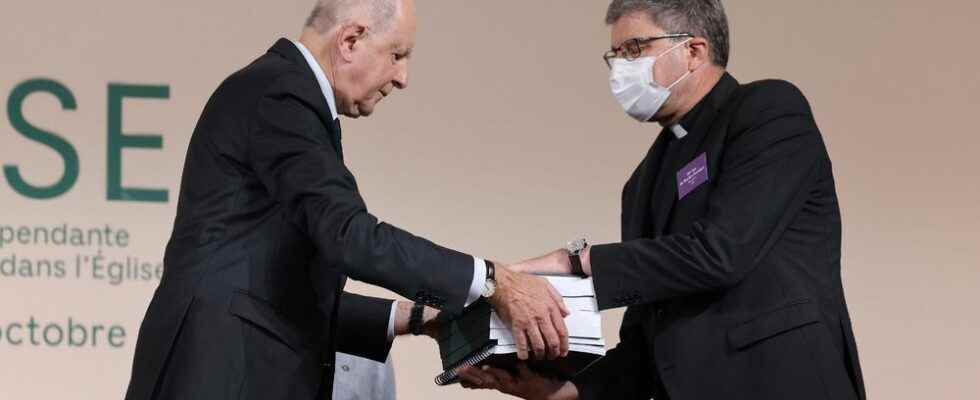When will the victims of sexual abuse committed by members of the Catholic Church finally be able to obtain reparation for the crimes suffered in childhood? We thought that after the publication, in October, of the report of the Independent Commission on Sexual Abuse in the Church (Ciase), chaired by Jean-Marc Sauvé, establishing the extent of the phenomenon, things would go quickly. However, while the bishops are meeting in Lourdes for their spring assembly until April 8, the implementation of the decisions taken in the fall is slow in coming. Of course, in November, the Church recognized its “institutional responsibility” through the voice of the Conference of Bishops of France. Of course, in January, she announced that she had set up a compensation fund of twenty million euros, collected from the dioceses. Of course, in February, it presented an Independent National Authority for Recognition and Reparation (Inirr) responsible for studying the requests, as recommended by Ciase. But more than six months after the explosive Sauvé report, the compensation body has not yet rendered any concrete decisions, nor even finalized its mode of operation and its principles of compensation.
On paper, its organization seems simple. Victims can apply for compensation either directly from the Inirr or via the dioceses. Whether the facts are prescribed and never studied by justice or not. A referent is then appointed. He will work with the victim on his request, check the plausibility of his story and then collect his expectations and needs. Because reparation is not necessarily financial, it can take the form of a request for forgiveness made by the Church or the person directly responsible for the acts caused or any other form desired by the victim. Then, if it is a financial request, the file is transmitted to a college composed of twelve people who establish the amount and transmit the order of payment to the fund constituted by the Church.
Jean-Marc Sauvé, president of the Independent Commission on Sexual Abuse in the Church (Ciase) submits his report to Eric de Moulins-Beaufort, president of the Conference of Bishops of France, on October 5, 2021.
afp.com/Thomas COEX
Founded on the principles of restorative justice, which therefore aims not only to compensate harm, but also to “repair” in a global approach, the effectiveness of the body relies heavily on the quality of the professionals it recruits and personalities who make up its college of experts. And this is where the shoe pinches. Because if the course of Marie Derain de Vaucresson, the president of the Inirr, jurist and former “defender of children”, is unanimous, the composition of the two other structures comes up against great difficulties. Because the referents must be lawyers or mediation professionals, accustomed to listening without judging. The members of the colleges of experts, twelve in number, may have a similar profile, but they are volunteers. In both cases, the question arises of a possible conflict of loyalty and/or interest with the Church, when it comes to believers or those close to the institution. Conversely, some of the representatives of victims’ associations, who could have joined the college of experts, cannot join it since they have sometimes filed a claim for compensation themselves.
A little technical in appearance, the difficulty nevertheless singularly blocks the progress of the work of the Inirr and the examination of the files of victims. And this, especially since the college of experts is also responsible for defining a scale, with minimum and maximum compensation, for each type of event, which will make it possible to individualize the amounts while respecting the principles of equity. According to initial data, some requests would go up to amounts of 50,000 to 60,000 euros. Antoine Garapon, who chairs an equivalent body intended to compensate the victims of religious men and women, mentioned a range of 5,000 to 150,000 euros. But for now, the process is at a standstill as the number of records starts piling up. At the end of February, Marie Derain de Vaucresson mentioned the figure of 180 requests, half of which related to money. From now on, more than the double would have arrived at the Inirr. With, for now, a simple email acknowledging receipt of the request as a response.
If the victims’ associations give the Inirr a few more weeks to fine-tune its start-up, they will not hesitate to step up if the repairs take too long to materialize. They have already shown, in the past and in particular when the Church was reluctant to recognize its responsibility and to fund compensation, that they knew how to make themselves heard. “We will be able to meet the first requests by the summer,” said Marie Derain de Vaucresson at the end of February. He has a few weeks left to get himself up and running. With the risk that the files accumulate. During its work, Ciase had collected more than 6,000 testimonies from victims and put forward a much larger number of potential abuses, up to 270,000 since the 1950s. How many will come to seek compensation? Nobody knows.
